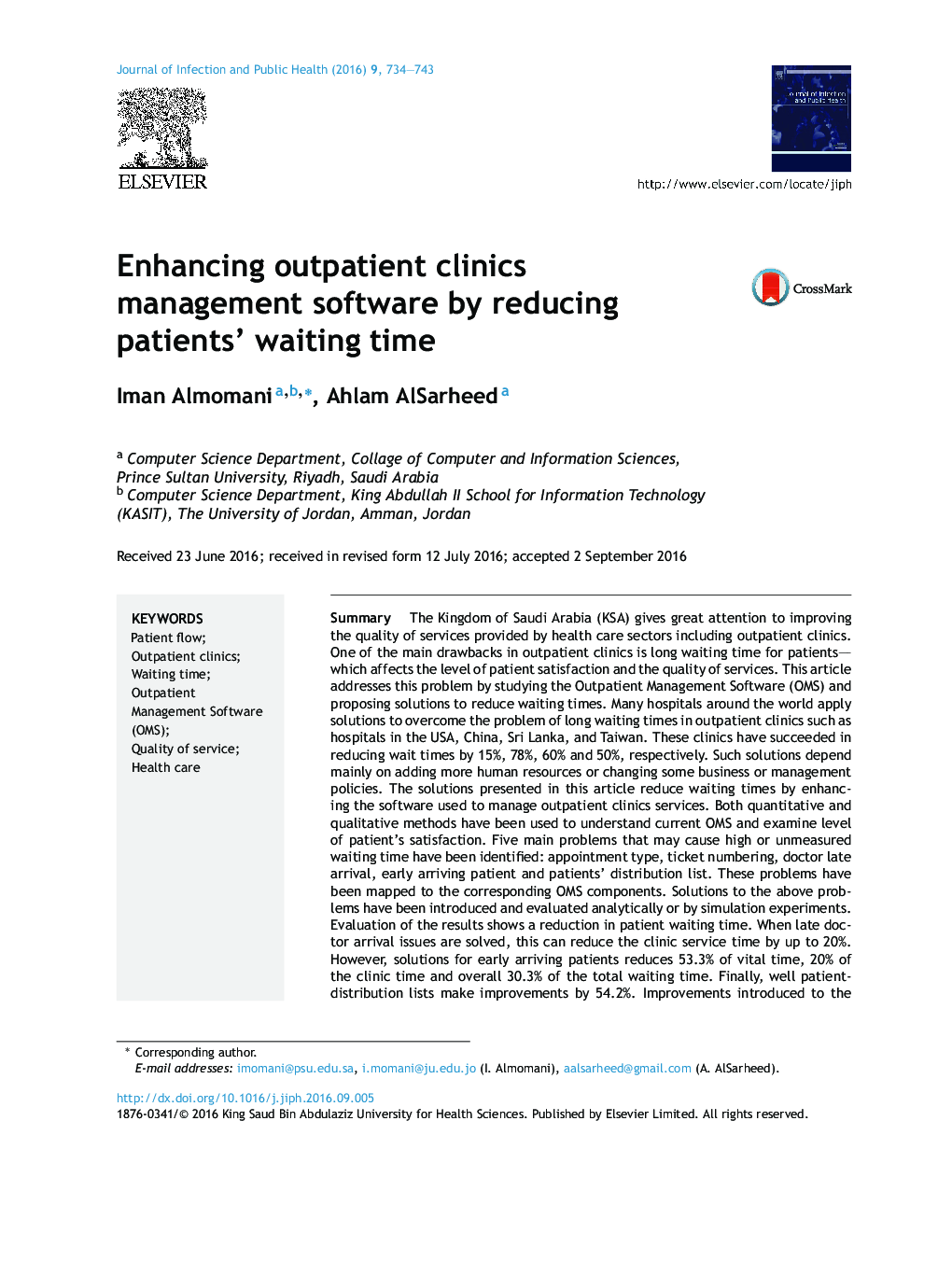| Article ID | Journal | Published Year | Pages | File Type |
|---|---|---|---|---|
| 5672844 | Journal of Infection and Public Health | 2016 | 10 Pages |
SummaryThe Kingdom of Saudi Arabia (KSA) gives great attention to improving the quality of services provided by health care sectors including outpatient clinics. One of the main drawbacks in outpatient clinics is long waiting time for patients-which affects the level of patient satisfaction and the quality of services. This article addresses this problem by studying the Outpatient Management Software (OMS) and proposing solutions to reduce waiting times. Many hospitals around the world apply solutions to overcome the problem of long waiting times in outpatient clinics such as hospitals in the USA, China, Sri Lanka, and Taiwan. These clinics have succeeded in reducing wait times by 15%, 78%, 60% and 50%, respectively. Such solutions depend mainly on adding more human resources or changing some business or management policies. The solutions presented in this article reduce waiting times by enhancing the software used to manage outpatient clinics services. Both quantitative and qualitative methods have been used to understand current OMS and examine level of patient's satisfaction. Five main problems that may cause high or unmeasured waiting time have been identified: appointment type, ticket numbering, doctor late arrival, early arriving patient and patients' distribution list. These problems have been mapped to the corresponding OMS components. Solutions to the above problems have been introduced and evaluated analytically or by simulation experiments. Evaluation of the results shows a reduction in patient waiting time. When late doctor arrival issues are solved, this can reduce the clinic service time by up to 20%. However, solutions for early arriving patients reduces 53.3% of vital time, 20% of the clinic time and overall 30.3% of the total waiting time. Finally, well patient-distribution lists make improvements by 54.2%. Improvements introduced to the patients' waiting time will consequently affect patients' satisfaction and improve the quality of health care services.
